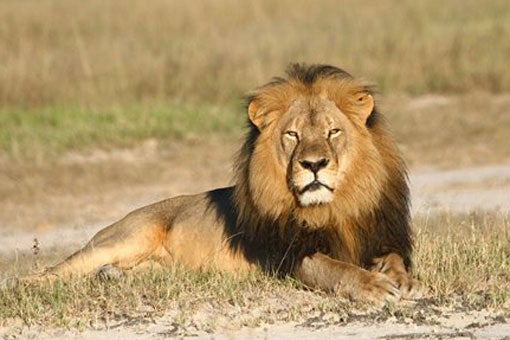|
August 3, 2015
New U.S. policies can discourage trophy hunting, Stanford expert says
Stanford legal scholar David J. Hayes says that the American government and policymakers can take measures to help reduce sport hunting of endangered wildlife populations around the world. By Clifton B. Parker

In this undated photo, Cecil the lion rests in Hwange National Park, Zimbabwe. His recent killing has put a spotlight on sport hunting in Africa. (Photo: Andy Loveridge)
The sport of trophy hunting big game animals can pose a big risk to depleted populations of endangered wildlife, a Stanford expert says.
The recent shooting of Cecil the lion in Zimbabwe this past week has sparked a national debate over the nature of big game hunting and poaching in Africa.
David J. Hayes, a visiting distinguished lecturer at Stanford Law School, said the United States can discourage such hunting by listing lions as endangered under the Endangered Species Act. Hayes serves on the White House Advisory Council on Wildlife Trafficking, and he led a 2014 student practicum at Stanford that developed a new approach to saving endangered wildlife. The practicum is part of the law school’s Law and Policy Lab.
Stanford News Service interviewed Hayes on the subject:
What went wrong in the Cecil the lion case? Was the killing legal?
It appears that the killing of Cecil the lion was illegal, primarily because Cecil was lured out of a protected area, Hwange National Park, and killed. Enforcement officers at the U.S. Fish & Wildlife Service are attempting to locate the U.S. hunter who killed the lion so they can question him.
What should be done about African countries allowing hunters to kill big game?
The killing of Cecil the lion has put a spotlight on sport hunting in Africa.
Sport hunting poses the most significant risk to wildlife populations whose numbers are depleted. That is why sport hunting of species that are categorized as "endangered" under the Endangered Species Act – like African elephants – is restricted, and is not allowed by U.S. authorities in countries that cannot demonstrate that they are managing their wildlife populations sustainably. Last year, for example, the U.S. Fish & Wildlife Service disallowed the importation of elephant sport hunting trophies from Tanzania and Zimbabwe because of a concern that those countries were collecting large hunting fees without ensuring overall health of elephant populations within their borders.
Currently, African lions are not categorized as "endangered" and, as a result, the U.S. does not limit lion hunting in African countries, nor does it limit the importation of lion trophies into the U.S. The U.S. Fish & Wildlife Service has proposed to list lions as endangered under the Endangered Species Act and, if finalized, restrictions on lion hunting would kick in.
What can the American government and policymakers do?
The "uplisting" of African wildlife by the U.S. Fish & Wildlife Service as endangered can reduce hunting pressure by limiting the countries in which such hunting is allowed to those that are effectively managing their wildlife. Also, the U.S. Fish & Wildlife Service can restrict the number of individual trophies that can be imported from qualifying countries within a given year, as it did recently for African elephants.
As a more general matter, the government and policymakers should step up their review of how responsibly African nations are managing hunting practices, particularly for wildlife populations that are under stress from poaching, loss of habitat and other conflicts. Also, while some African countries rely on hunting revenues to support conservation efforts, questions about the linkages between hunting funds to on-the-ground conservation activities, and about the amount of funds that are actually funneled to those programs, need to be answered.
The stakes are very high, particularly given the sophisticated criminal syndicates that are operating in many African countries and arranging for the killings of extraordinary numbers of elephants, rhinos, tigers, lions and other species, and then marketing ivory, rhino horn, tiger bone and other wildlife parts in the U.S., Asia and around the world. Independent analyses have indicated, for example, that approximately 100,000 elephants have been killed for ivory in the last three years – or one every 15 minutes.
President Obama addressed this issue during his recent visit to Kenya. He announced that the U.S. is continuing to tighten up our ban on the sale of elephant ivory, and he also announced the formation of a public-private partnership to reduce the demand in the U.S. for illegal wildlife products.
Any other concerns?
One of the major concerns is that the pervasive influence of the illegal wildlife traffickers is corrupting the integrity of African wildlife hunting programs. There have been documented cases in which hunting concessions in Tanzania, for example, have been exploited to provide cover for massive illegal killings and trafficking of wildlife parts.
For more Stanford experts in law and other topics, visit Stanford Experts.
-30-
|